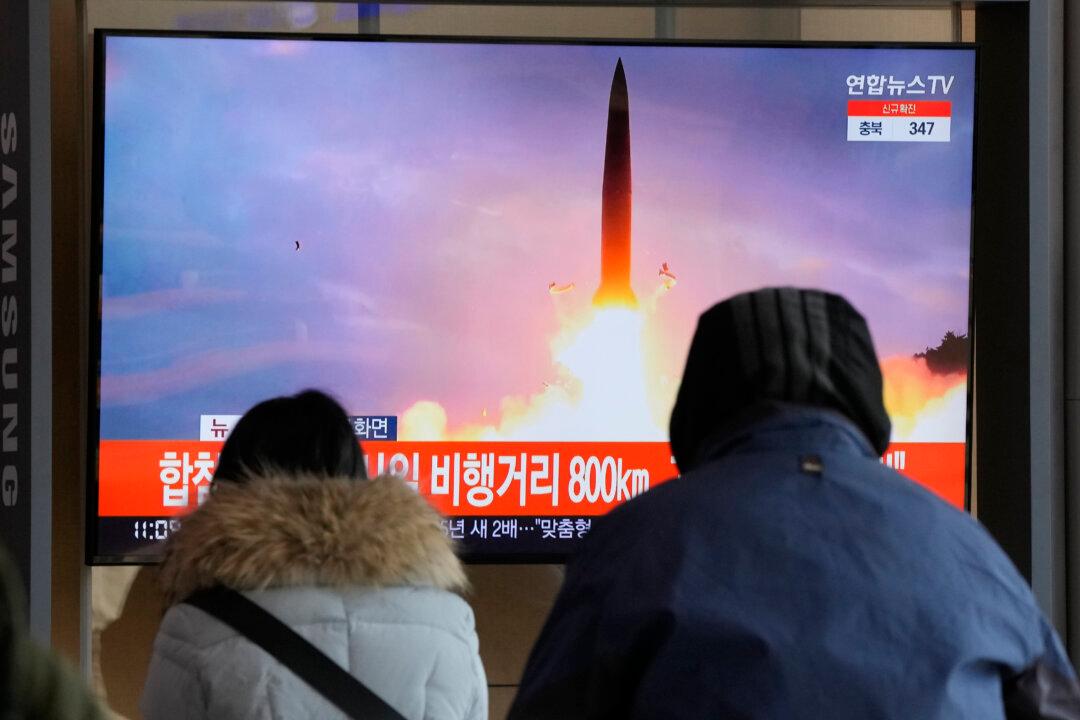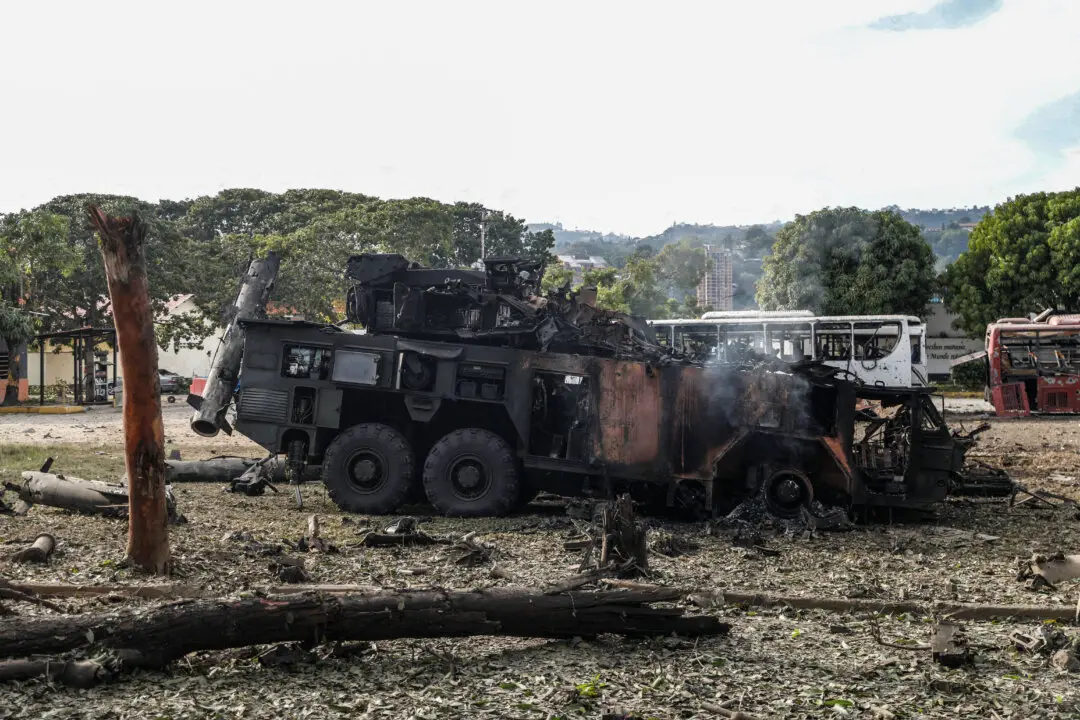North Korea ramped up its recent bevy of weapons tests on Jan. 30, firing what analysts say is the most powerful missile the isolated regime has tested in five years.
Pyongyang’s seventh launch of January 2022 traveled 1,242 miles upward and landed in the ocean about 500 miles away, according to officials of the Japanese and South Korean governments. No damage or injuries were reported.





